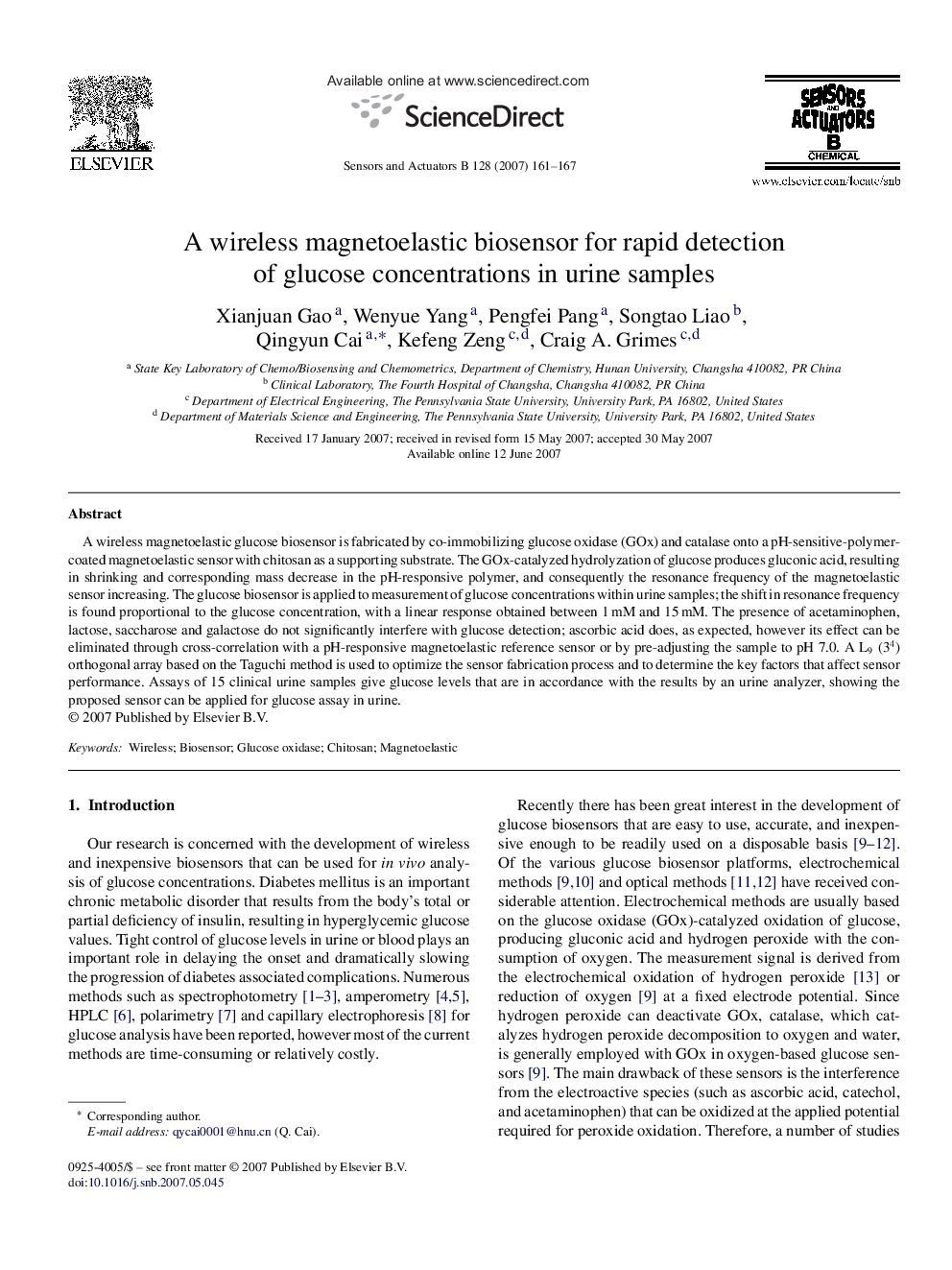| Article ID | Journal | Published Year | Pages | File Type |
|---|---|---|---|---|
| 744491 | Sensors and Actuators B: Chemical | 2007 | 7 Pages |
A wireless magnetoelastic glucose biosensor is fabricated by co-immobilizing glucose oxidase (GOx) and catalase onto a pH-sensitive-polymer-coated magnetoelastic sensor with chitosan as a supporting substrate. The GOx-catalyzed hydrolyzation of glucose produces gluconic acid, resulting in shrinking and corresponding mass decrease in the pH-responsive polymer, and consequently the resonance frequency of the magnetoelastic sensor increasing. The glucose biosensor is applied to measurement of glucose concentrations within urine samples; the shift in resonance frequency is found proportional to the glucose concentration, with a linear response obtained between 1 mM and 15 mM. The presence of acetaminophen, lactose, saccharose and galactose do not significantly interfere with glucose detection; ascorbic acid does, as expected, however its effect can be eliminated through cross-correlation with a pH-responsive magnetoelastic reference sensor or by pre-adjusting the sample to pH 7.0. A L9 (34) orthogonal array based on the Taguchi method is used to optimize the sensor fabrication process and to determine the key factors that affect sensor performance. Assays of 15 clinical urine samples give glucose levels that are in accordance with the results by an urine analyzer, showing the proposed sensor can be applied for glucose assay in urine.
